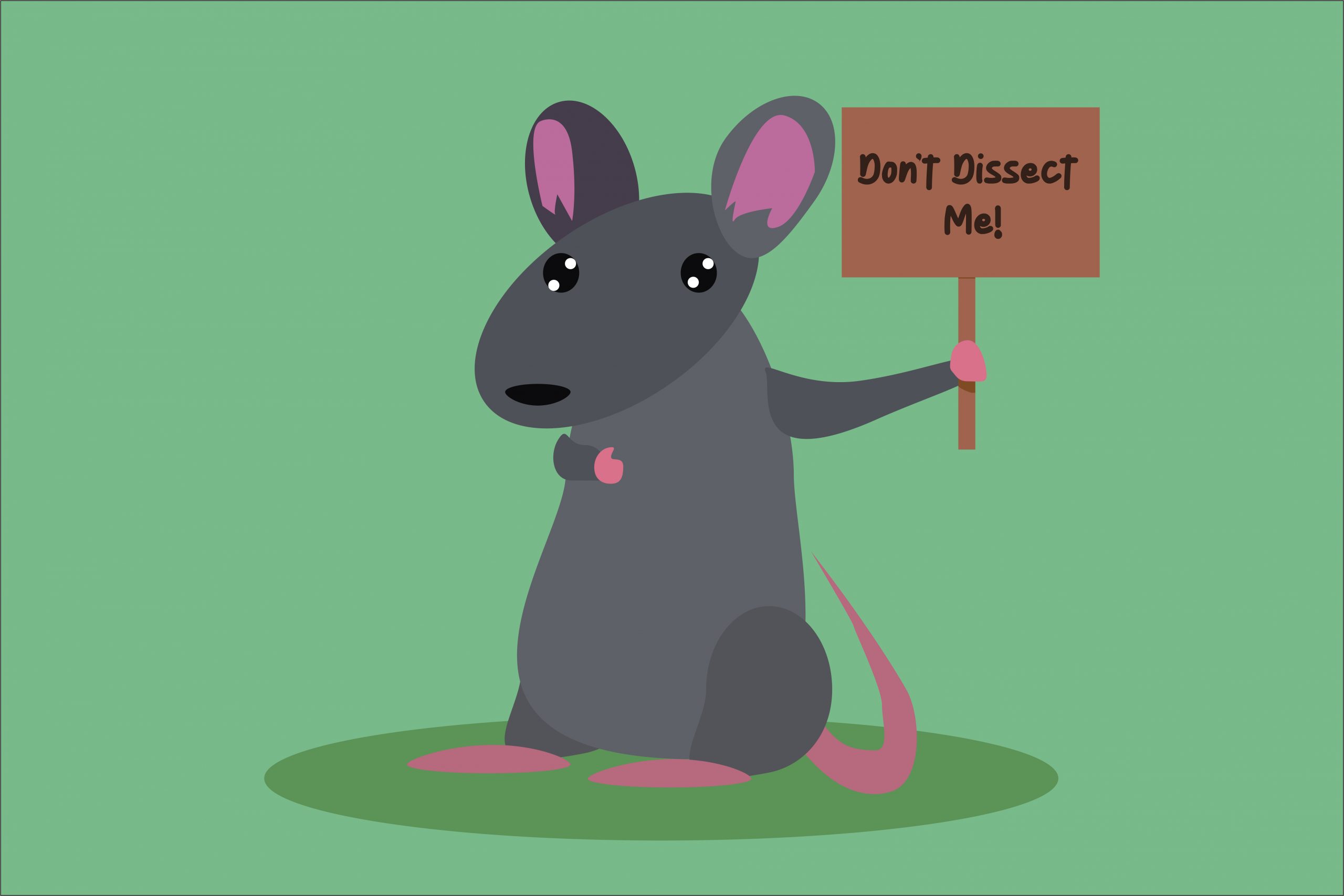Imagine you’re doing homework with your roommate on the floor of their room. They’re a psychology minor and reading about yet another experiment in which rats are the default test subjects. “Man, why does it always have to be the rats?” they sigh. With that begins the rabbit hole of questions about the issue. What started as some weird inside joke you both share has transformed you two into advocates for rats and their little lives.
If my roommate hadn’t been so curious about rats and their role in scientific research, we never would have known the effect it actually has on them. Lab rats don’t live very fulfilling lives. They live in clear small boxes and suffer from the effects of continuous testing. Immediately after participating in an experiment, they are killed off. It sounds like how you would expect, but would you be able to predict the sheer scale of the deaths? According to the article “What Happens to Lab Rats After Testing?” Hemi Kim wrote, “About 110 million rats and mice are used in research in the U.S each year.” That means at least 100 million rats are killed annually in scientific studies.
It’s common knowledge that rats are the first to be suggested for scientific experiments, but how bad is it really? Society often portrays rats as trash, but I mean have you seen “Ratatouille”? I know you’d be crying if Remy died. Not only this, but rats have become more accepted as house pets. If your pet rat is being treated like your dog, Spike, then maybe it shouldn’t be an animal that’s experimented on.
Rats are used for studies on everything from manipulation, pain biology, behavioral psychology, neurology, chemical toxicity and even consumer product testing. Rats can experience pain and feel each and every test that is attempted on them. They live in small-sized show boxes so they aren’t even given healthy living environments while they are being tested on. Once they’ve completed their assigned task, they’re killed.
The most common ways of killing the rats are suffocation, lethal injection or just cutting off their heads. Not only is this cruel and unfair to the animals, but it’s even traumatized some of the lab technicians as well. In the article above, a technician named Lindsay Oliver said, “I know those pit of stomach feels when you hear the air escaping from an animal’s lungs, or little feet scurrying inside of a gas chamber before the silence hits.” Many others have admitted that it’s hard to torture an innocent life, even if it might be for the greater good.
One could ask, “Is this even necessary anymore?” Maybe in the past it was the best we could do with the technology we had, but now we have become so advanced, some argue it isn’t necessary anymore. Not to mention we can use data from previous experiments to help with future ones. Even if it just reduces the number of rats used in science experiments, it would be an improvement. There are also many other solutions to the issue; PETA has already proposed alternatives to testing on rats and other animals.
The first alternative solution would be in vitro testing. This kind of test experiments on human cell and tissue samples without causing harm to the person. This is useful because it doesn’t cause pain and it’s experimenting on the organism it is meant to benefit.
Another alternative method would be using human volunteers. This too would test on the intended beneficiary more directly, but with people willing to contribute to the cause. While some may see the use of human volunteers as unethical, isn’t that what they were doing with the rats? Plus, this would only be with people that agreed to be tested on. To make this as safe as possible, scientists would only microdose the volunteers, which is basically giving a smaller amount of a drug to observe its effects. Using a smaller dose can lessen the amount of damage inflicted on the person.
The last solution is to use a computer modeling system that can simulate a brain imaging screen. This can view biological structures of the body and brain while monitoring the progression of human diseases.
Until the day we can see these solutions implemented, there are small ways in which you can help make a difference. One way that you can help stop lab rat testing is by simply being aware of the things that you buy. Purchase products that don’t rely on animal testing and avoid buying products that do. If you’re unsure where to start, a great place to look is Ethical Elephant, which includes an entire list of your favorite brands and notes whether they are cruelty-free.
I realize that this issue might not be as essential as climate change or as obvious as world hunger, but I believe it is important nonetheless. If I don’t care about this weird and specific cause, then who will? I believe it’s crucial to be curious about those small things that maybe begin as a joke with a friend. If you aren’t passionate about your passions, then how will you be able to make other people care about them? Maybe by writing this article, I can convince more people to take action to help end cruelty toward rats, as well as animals in general. Even if I’m only one person, being able to share a cause I care about feels like a step in the right direction.

















